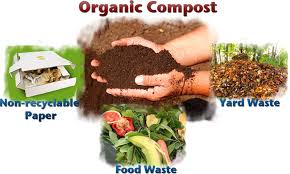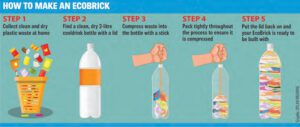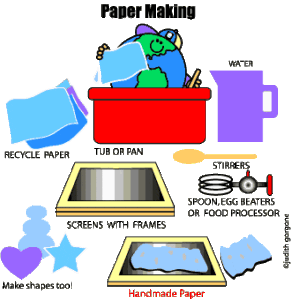Importance of Waste Recycling to Best Products in Home
- Recycling waste into valuable products at home plays a crucial role in promoting environmental sustainability, reducing waste, and fostering creativity.
- Here are the key reasons why recycling waste into best products at home is important:
Reduces Environmental Impact
- Decreases Landfill Waste: By recycling and repurposing waste materials like plastic, glass, and paper into new products, you reduce the amount of waste sent to landfills, which lowers the pressure on waste disposal systems.
- Minimizes Pollution: Recycling waste prevents harmful materials like plastics and e-waste from polluting land, water, and air. It also reduces the release of greenhouse gases produced by waste decomposition in landfills.
- Conserves Natural Resources: Repurposing waste reduces the need for raw materials (like trees for paper, petroleum for plastics), preserving ecosystems and biodiversity.
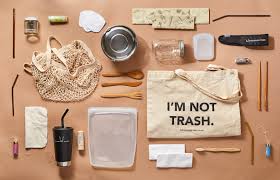
Promotes Circular Economy
- Extends Product Lifespan: Turning waste into new products keeps materials in use for longer, helping shift from a linear “take, make, dispose” economy to a circular one where materials are continually reused.
- Lowers Resource Demand: Home recycling reduces demand for new raw materials, decreasing the need for extraction, mining, and harvesting, which are energy-intensive and damaging to the environment.
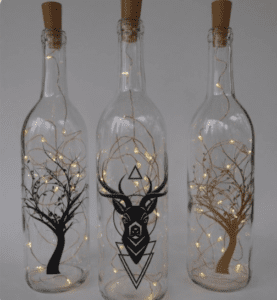
Saves Money and Resources
- Reduces Household Expenses: Repurposing materials to create products like cleaning solutions, home décor, or storage items can save money by reducing the need to purchase new products.
- Energy Savings: Manufacturing new products from recycled materials typically uses less energy than producing them from raw materials. For example, recycling aluminum saves up to 95% of the energy required to produce new aluminum.
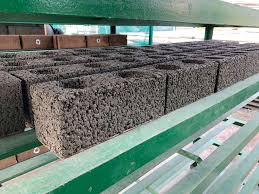
Encourages Creativity and Innovation
- DIY Opportunities: Recycling waste into best products encourages creative problem-solving and innovation. Individuals can experiment with different ways to repurpose materials, resulting in unique, customized products for the home.
- Boosts DIY Culture: Upcycling and DIY projects from waste allow you to personalize your home décor, furniture, and everyday products while reducing waste.
Reduces Household Carbon Footprint
- Lower Emissions: Recycling waste at home reduces the need for waste transportation and industrial processing, which can lower the carbon emissions associated with waste disposal.
- Biogas from Organic Waste: Converting organic waste into biogas can reduce dependence on fossil fuels for cooking or heating, further reducing the household’s carbon footprint.
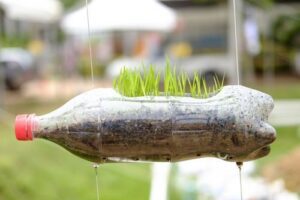
Encourages Sustainable Living
- Fosters Awareness: Recycling waste into useful products raises awareness of sustainable living and encourages conscious consumption habits. It helps individuals and families understand the value of materials and the environmental impact of waste.
- Promotes Zero-Waste Lifestyles: By making use of every bit of waste, people are encouraged to adopt zero-waste habits, focusing on reducing waste generation and maximizing material reuse.
Supports Community and Educational Initiatives
- Community Engagement: Sharing knowledge and practices of home recycling can inspire others in the community to adopt similar sustainable practices, leading to a larger positive environmental impact.
- Educational Value: Involving children and family members in recycling projects teaches valuable lessons about resource management, sustainability, and environmental stewardship.
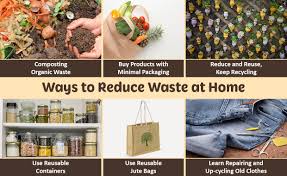
Reduces Dependence on Industrial Recycling
- Less Pressure on Recycling Plants: By recycling waste at home, you reduce the strain on municipal recycling systems, which can be costly and energy-intensive.
- Better Control of Recycling: Some materials that are difficult or costly to recycle through industrial processes (e.g., plastic bags, small metal scraps) can be repurposed at home into useful products, minimizing waste that would otherwise go unprocessed.
Improves Home and Garden
- Nutrient-Rich Compost: Composting organic waste improves soil health, supports home gardening, and increases plant productivity, leading to healthier plants and more sustainable food production.
- Eco-Friendly Home Décor: Recycling materials like glass, wood, and plastic into creative home décor or furniture can enhance the aesthetic value of your home while promoting sustainability.
Encourages Responsible Consumption
- Conscious Purchasing Decisions: Knowing that waste can be repurposed encourages consumers to think carefully about the products they buy, opting for items with longer lifespans or easier recyclability.
- Reduced Single-Use Products: Recycling encourages the reduction of single-use products in favor of reusable alternatives, leading to less overall waste generation.

Best Waste recycle Ideas
Here are some of the best ideas for turning waste into useful products at home, focusing on creative upcycling, recycling, and repurposing to promote sustainability:
1. Compost (Organic Fertilizer)
- Waste Used: Food scraps (vegetable peels, fruit waste), garden waste (grass clippings, leaves).
- Product: Nutrient-rich compost for home gardens.
- Benefits: Enriches soil, reduces the need for chemical fertilizers, and diverts organic waste from landfills.

organic Compost Nutrient-Rich Organic
2. Eco-Bricks (Construction Material)
- Waste Used: Non-recyclable plastic (wrappers, packaging, plastic bags).
- Product: Eco-bricks for simple construction projects (walls, garden furniture).
- Benefits: Reduces plastic waste and creates durable, versatile building materials.

How-to-Make-a-Eco-brick-from waste
3. DIY Cleaning Products
- Waste Used: Citrus peels (lemon, orange) and vinegar.
- Product: Natural cleaning solutions.
- Benefits: Non-toxic and eco-friendly alternatives to chemical cleaners, reducing packaging waste.
4. Handmade Paper
- Waste Used: Shredded paper, newspapers, cardboard.
- Product: Recycled paper for crafts, wrapping paper, or stationery.
- Benefits: Reduces deforestation and the need for new paper production.

paper making steps
5. Glass Jars and Bottles as Storage
- Waste Used: Old glass bottles, jars.
- Product: Storage containers for kitchen staples (grains, spices), or decorative items (vases, candle holders).
- Benefits: Reduces plastic use and keeps glass out of landfills.
6. Biochar from Wood Waste
- Waste Used: Wood chips, sawdust, branches.
- Product: Biochar for soil improvement in gardens.
- Benefits: Enhances soil fertility, increases water retention, and sequesters carbon.
7. Upcycled Furniture
- Waste Used: Old furniture, wooden pallets, or unused materials.
- Product: Refurbished furniture (tables, chairs, shelves).
- Benefits: Saves money, reduces waste, and brings creativity into home décor.
8. DIY Candles from Used Cooking Oil
- Waste Used: Used cooking oil.
- Product: Homemade candles.
- Benefits: Reduces waste by repurposing used oil and creates a functional home product.
9. Mushrooms from Coffee Grounds
- Waste Used: Used coffee grounds.
- Product: Homegrown oyster mushrooms.
- Benefits: Produces fresh, edible mushrooms, reduces waste, and enriches soil with spent mushroom substrate.
10. Tote Bags from Old Clothes
- Waste Used: Old T-shirts or fabric scraps.
- Product: Reusable tote bags.
- Benefits: Reduces the need for plastic bags, promotes reusability, and gives a second life to old clothes.
11. Soap from Used Cooking Oil
- Waste Used: Used cooking oil.
- Product: Homemade soap bars.
- Benefits: Reduces waste and repurposes oil, creating a natural cleaning product.
12. Flower Pots from Plastic Bottles
- Waste Used: Plastic bottles.
- Product: Planters for small plants or herbs.
- Benefits: Reduces plastic waste, encourages home gardening, and adds green space.

colorful-plastic-oil-jar to plants
13. Jewelry from E-Waste
- Waste Used: Broken electronics, wires, small components.
- Product: Unique handmade jewelry or accessories.
- Benefits: Repurposes e-waste creatively, reducing environmental impact.
14. Decorative Items from CDs and DVDs
- Waste Used: Old or scratched CDs and DVDs.
- Product: Mosaic artwork, mirrors, or coasters.
- Benefits: Reduces e-waste and creates stylish, reflective home décor.
15. Pet Beds from Old Clothes and Fabrics
- Waste Used: Old T-shirts, sweaters, blankets.
- Product: Comfortable pet beds.
- Benefits: Reduces textile waste and provides cozy beds for pets at no cost.
16. Eco-Friendly Wrapping Paper from Newspapers
- Waste Used: Old newspapers or magazines.
- Product: Creative wrapping paper for gifts.
- Benefits: Reduces paper waste and adds a unique, personal touch to gift-giving.

waste shredded papers to best papers
17. Rainwater Harvesting System
- Waste Used: Repurposed barrels or containers.
- Product: Water storage system for garden irrigation.
- Benefits: Conserves water and reduces reliance on municipal water systems.
18. Recycled Plastic Rope
- Waste Used: Plastic bags or wrappers.
- Product: Braided plastic ropes for household use (tying plants, securing items).
- Benefits: Repurposes plastic waste and reduces the demand for new plastic ropes.
Conclusion’
- By implementing these waste-to-best ideas, you can reduce your environmental footprint while creating useful, practical, and even decorative products for your home
- In summary, recycling waste into best products at home is a practical and impactful way to promote sustainability, save resources, reduce pollution, and foster creativity while supporting environmental and economic goals.

